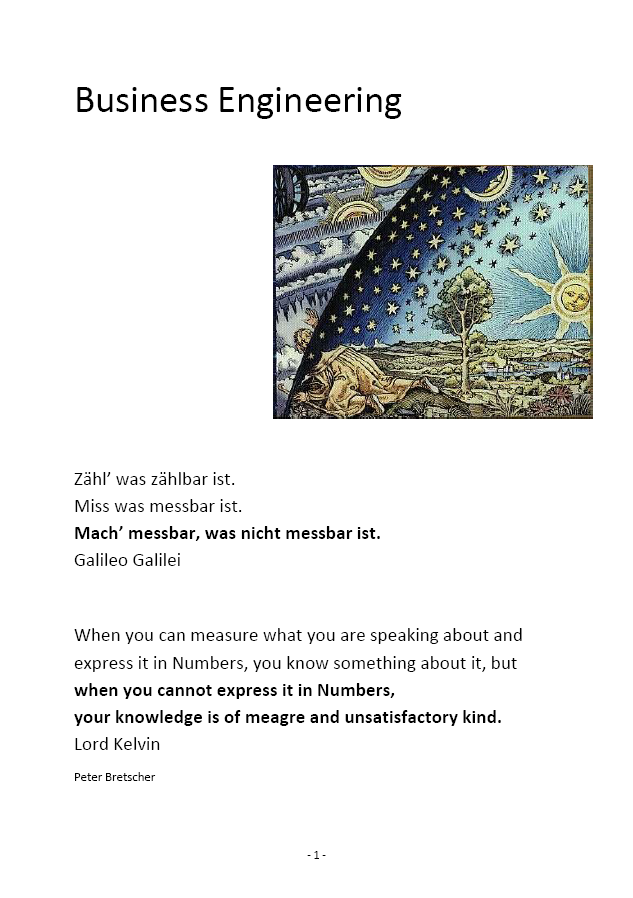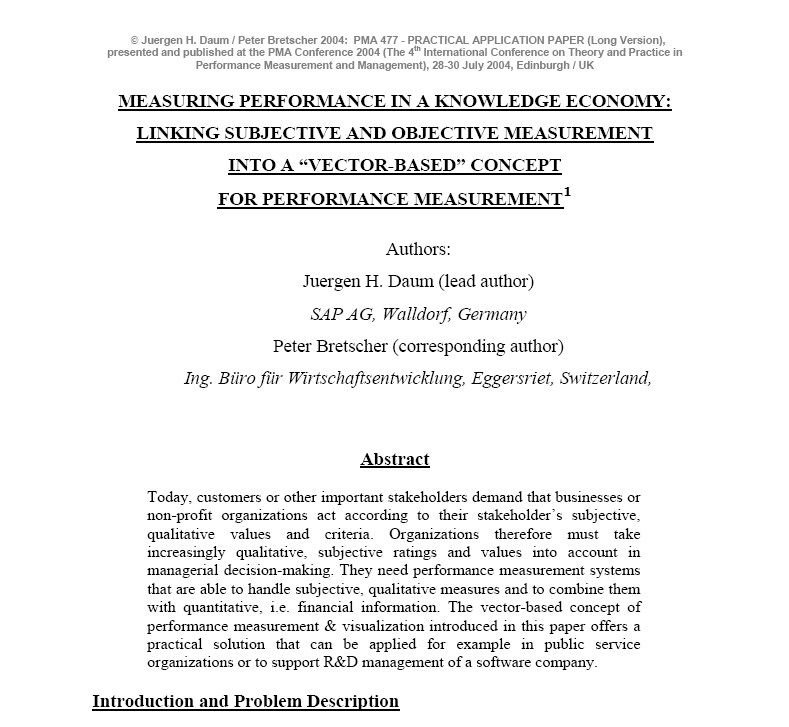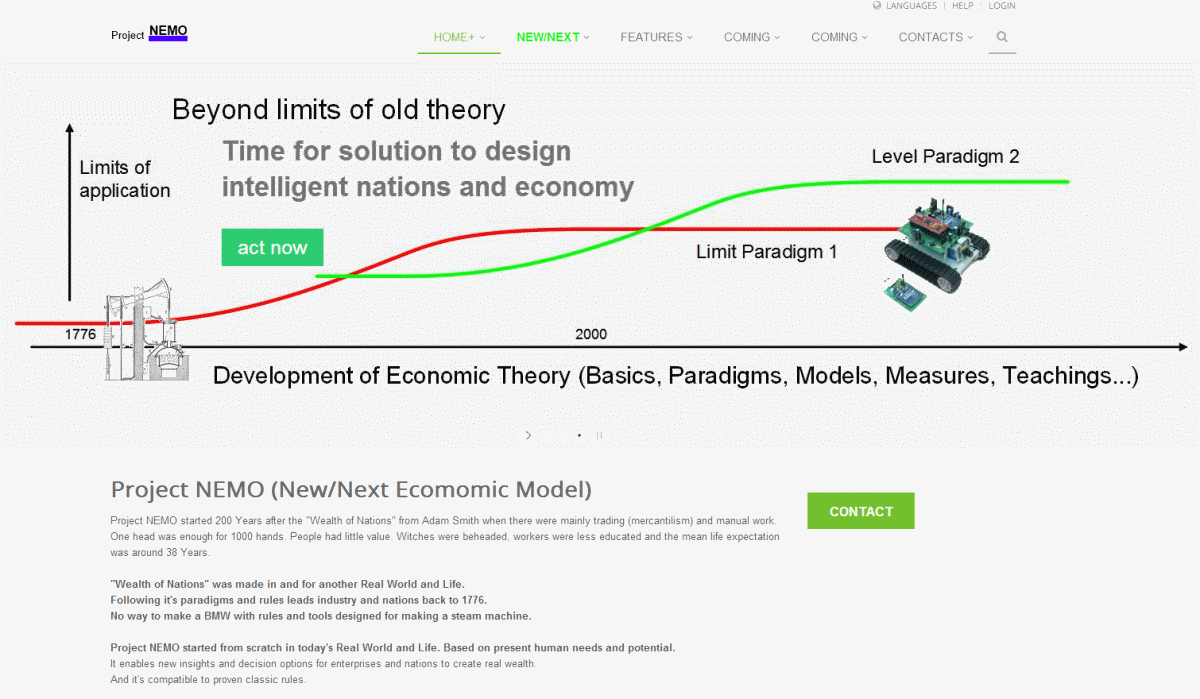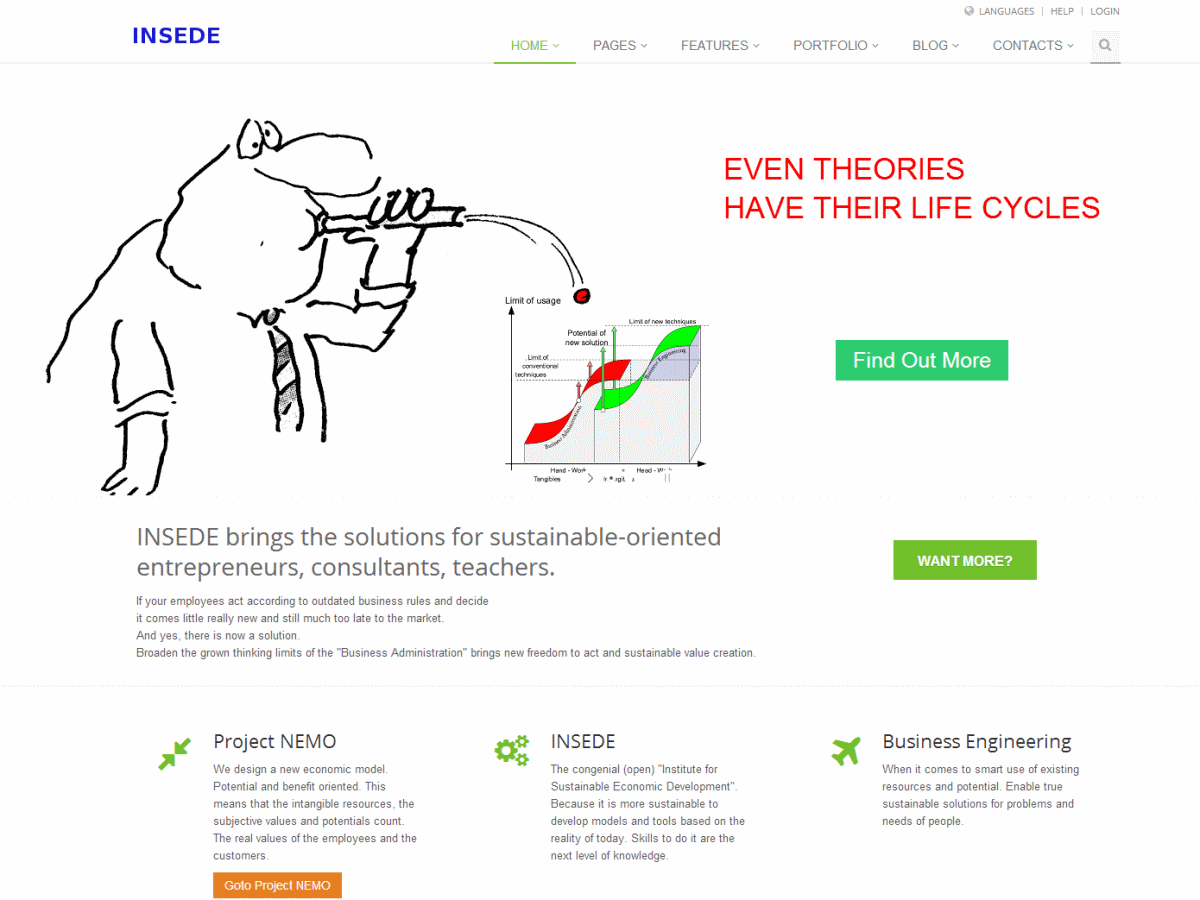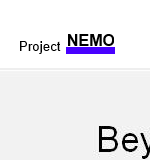 1776
1776
1776 Adam Smith, slavery, first balloon, no electricity, hunting and killing witches...
 2014
2014
2014 Real reality has changed - our living, our possibilities and our worldview too.
When Adam Smith wrote his "Wealth of Nations" - the standard for today's economic theory - he lived in another world.
Much has changed since then - but not the fundamentals of economic theory. That's why we have crisis following crisis - until we have an economic theory that works.
Sorry economists: There is no way of really improving a theory that is based on outdated fundamentals.
But changing some (now) obsolete paradigms allows the design of a economic model that is more helpful in our world.
That's why we started "Project NEMO".
Want to bring in your insights and solutions? Just write me a mail. There's much to do. :-)
- Project NEMO (New/Next Economic Model) Project Lead: Peter Bretscher
- Questions
- What are the Solution and the Strategy?
Solution:
The proposed solution is a disruption in classic economic model/mindware that (i) has a framework that integrates intangible assets (knowledge, skills...) and (ii) has an enhanced quantitative economic value metric system that combines monetary/objective and non-monetary/subjective value dimensions and visualizes it in the form of a vector.
This solution enhances the rules of economic decision-making so that, based on available resources, the results are much more sustainable and profitable.
Strategy:
The development of economic models is usually within academic silos. It is building on previous doctrines, iteratively, requires very long time and is little transdisciplinary. (Don't touch the basic assumptions.)
That - and other reasons - causes that an independent institute (INSEDE - Institute for Sustainable Economic Development) is set up, that operates the platform and is the legal entity for the development and dissemination of the new generation of proprietary economic models, tools and services. - What is the Context?
Economic rational decision process follows rules based largely on insights Adam Smith has written down 1776 in his "Wealth of Nations". It was a time when witches were burned and beheaded. One head worker is enough for 1'000 manual workers. People were not really educated in today's understanding. Common mantra for wealth of nations in all economic schools of the world is: "factors of production" is "Land, Labor, Capital".This mantra, still teached in the western understanding of economy, has become obsolete. Factors of production are now "tangible and intangible assets". And to use one of three "factors of production" (capital) at the same time as THE standard unit for the economic valuation is a scientific mortal sin. It is a systemic failure in the base of economics too.
It is high time for redesigning the economic theory so that it is useful not only in the old, but also in the smart economy.
- What/Where/How?
I have experienced in a large corporation that kind and intelligent managers have made disastrous bad decisions (based mainly on monetary indicators). And I have interpreted such that not the people, but the latest business tools and methods used are bad.I have found some blind spots (systemic failures) in the base of classic economic theory and solutions to solve them.
The project changes (i) the scientific base and (ii) the standard of classic rational economic reasoning. And it enables a next level of economic decision making and transparency.
- Who is impacted directly?
- Theory workers who design economic mindware based on classic economic paradigms (not really impacted at first, because they will ignore disruptive approaches)
- Teachers of classic economic solutions (part will deny, part will rewrite their teaching papers)
- Consultants (part will sell their classic methodology until customers demand better solutions, part will join as early adaptors)
- Auditors - same as consultants, but later, because the audit process has to fulfill legal restrictions.
- Decision makers of any private and public organization (part will stay with classic economic reasoning and their consultants - part will use new reasoning and strategic options) will be able to make more integral and sustainable decisions.
That means that anyone who depends on the economic decision making will profit either directly or/and indirectly.
- What is impacted directly?
The "artificial" quantitative reasoning framework and system that limits/opens the dimensions of the "allowed" value metric. Long-Term Effect
Estimating the effects by expanding the paradigms of a core "science" that has such a huge impact on the behavior of companies, countries and people is not really easy. If the expansion has to have positive effects, and it should, the procedure must be chosen very wisely. In the end it will enable sustainable economic decisions, because it puts people's abilities and needs at the center of considerations. It will enable a more "human system".- Inspiration, History and Vision
- Inspiration 1:
There are 'four Worlds' (enhancing Popper's three Worlds)
World_1 = real world
World_2 = experienced world
World_3 = explained world
World_4 = world of rulesWorld_1 (real world of economy) has changed fundamentally since 1776 when the base of today's economic mindset was set up. In the consecutive development of the "explained world", still based on the paradigms of historic real world, we now have an economic model ("World_3") that is no more useful for explaining the (intelligent) "World_1" we are living in now.
- Inspiration 2:
Didn't find important parts of my "Real World_2"-experience in the - later learned - academic "Explained World_3" of economic theory. - Inspiration 3:
The existence of "imaginary numbers" and the combination with the "real numbers" by Carl Friedrich Gauss as "complex numbers" visualized in the form of "vectors" on a "complex plane". - Inspiration 4:
Two friends of mine died of a heart attack during an overhead value analysis. They had to save 10% of payroll. I asked myself, "Why?" My answer was: "They could not express the loss of the potential of the company in numbers. There was no rational way to articulate these (intangible) loss and compare it with the monetary savings."
Decision: Development of an additional Balance Sheet for Intangible Assets.
- Inspiration 1:
- Planning and Operations
Project NEMO (New/Next Economic Model) has two subprojects:- The models and tools (basics and applications).
A lot of work has already made, including proper intellectual property rights (invest more than 4.5 Mio.) - Set up of INSEDE (Institute for Sustainable Economic Development) as a legal unit for further developing innovative solutions on an open copyright base for private use. Professional use requires a small license fee in order to pay the staff and the developers who work for INSEDE.
Business Model for INSEDE is ready.
Progress depends on how much money is available for the startup phase.
Until today: private funds > CHF Mio. 6.2
Several thousand documents, real 3D Models, software, registered copyright, additional patents still possible....
- The models and tools (basics and applications).
- Projects and Organizations with similar aims
There are several organizations that seek to improve the economic model. Even with large budgets.
14 of them are listed on a special webpage (HERE).
Problem: They work mainly with academic experts and look for (iterative) solutions based on earlier theories from economists who lived in "another real world". They may improve existing solutions, but they are trapped in the academic scientific consent. They have the classic blockades of the experts when it comes to innovation. There are the difficulties that Thomas Kuhn has described in his major work "Structure of Scientific Revolution".
My proposal starts with an extension of the principles and the elimination of two systemic failures in the economic doctrines. It allows therefore a disruptive development of the model to a higher level. - The Team
The team will be assembled according to the financial possibilities. Also the priorities of the development task force shall be determined according to the budget.
The more money we have, the faster we can integrate partners and adapt and spread the solutions. - People
Full: 1, Volunteers: Part 4
Operating Budget (small option): 2014: $ 100'000 - Supporting Materials
- Documents
- Images
- Video
- Build potential (invest money, gain knowledge/intangibles...)
- Grow (sell goods, services, licenses, earn additional knowledge/intangibles)
- Reduce (sell part of potential, infrastructure..., earn money)
- kill (shed, lose potential and money)
E-mail: peter.bretscher@bengin.com
Website Address: https://bengin.net/nemo
Primary Location: Alpsteinstrasse 4, 9034 Eggersriet, Switzerland
Attached materials (listed by title, date, and source) as PDFs or URLs that directly support your application and/or independently corroborate your claims. For example: any research, press, publications, or business. You may provide up to three links or documents.
Time line of own and other developments.
This brochure summarizes selected development stages and milestones chronologically. The timeline is completed by other publications, which reflects the "spirit" of the development of the economy and the economic theories and their interpretations.
It has links to the originas sources.
The document will be regularly updated and currently includes some 90 pages.
It has been downloaded more than 5'500 times.
Business Engineering Seminar
This document contains the presentations from the Business Engineering Seminar.
The document is still in (mostly German) alpha version and has about 250 pages.
The (formal) qualitative shortcomings will be remedied as soon as the priorities change.
Linking Subjective and Objective Measurement
Today, customers or other important stakeholders demand that businesses or non-profit organizations act according to their stakeholder’s subjective, qualitative values and criteria. Organizations therefore must take increasingly qualitative, subjective ratings and values into account in managerial decision-making. They need performance measurement systems that are able to handle subjective, qualitative measures and to combine them with quantitative, i.e. financial information. The vector-based concept of performance measurement & visualization introduced in this paper offers a practical solution that can be applied for example in public service organizations or to support R&D management of a software company.
Go to special pageThree images (of several thousands) to illustrate our focus and how it may inspire to find new solutions.
Look first at the real reality - then make your own virtual reality (theory)
If theory fails - change theory, not reality.
The improvement of a theory may start when there are no more sufficient models to explain the reality.
Mindware for insights - Software for support
It is not helpful to develop new software for obsolete theories.
Below is one of several videos. For more go to YouTube.
Strategic Potential and Performance Quadrants (explicit meets implicit)
Classic view is, that you measure and show value, progress and performance in monetary units. This economic paradigm lefts out that there are nonmonetary values too.
If one accepts the potential as second dimension it's possible to show the four quadrants of integrated enterprise wealth.
You may download Powerpoint and pdf file that was made for video.
download pdf download pptxProject NEMO
(New/Next Economic Model)
"Project NEMO" is the name for the main project that summarizes all the tasks to enable the professional development and the integration of the next generation of economic model that has the abilities and needs of people in its core.
INSEDE
(open) Institute for Sustainable Economic Development
INSEDE is the name for the legal and operational body that gives the direction, guidance and maintains an adequate infrastructure to enable a distributed development in order to get instruments that enable more sustainable decisions in the new world. INSEDE is financed by licensing out its proprietary solutions and services for professional use - private use is free.






